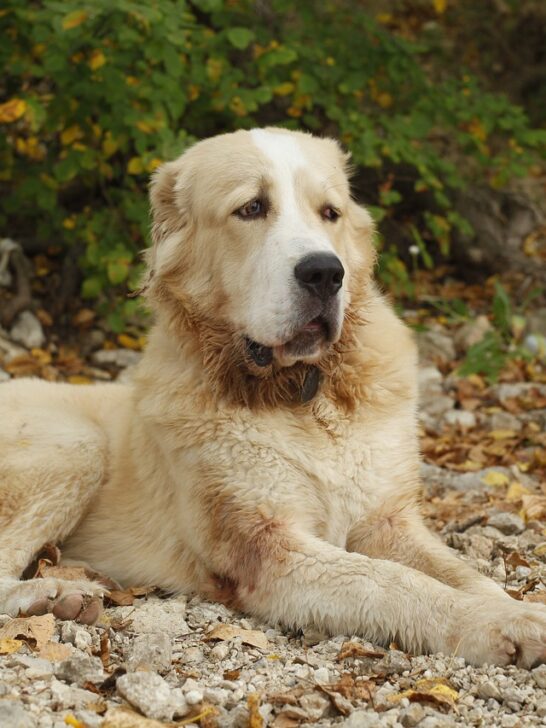German Shepherd Puppy Ear Stages: When Will Your GSD’s Ears Stand Up?
German Shepherd dogs have a very distinctive appearance in every way, from their big strong bodies to their alert standing ears.
But what many first-time German Shepherd puppy owners don’t realize is that GSD puppy ears typically don’t stand up like they do in adulthood.
The shape of their ears can actually change a lot during the first 5 to 6 months of their lives.
Their ears may stand up erectly at the 1 month mark, only to flop back down at 4 months of age.
So when can you expect to see your German Shepherd puppy start to look like a classic GSD, with those iconic erect ears?
Also, if your GSD puppy’s ears don’t stand up on their own, is there any way you can make them stand up?
In this article, we will walk you through the different German Shepherd puppy ear stages and ear charts.
By the end of this article, you will know what to expect, and when to intervene if needed.
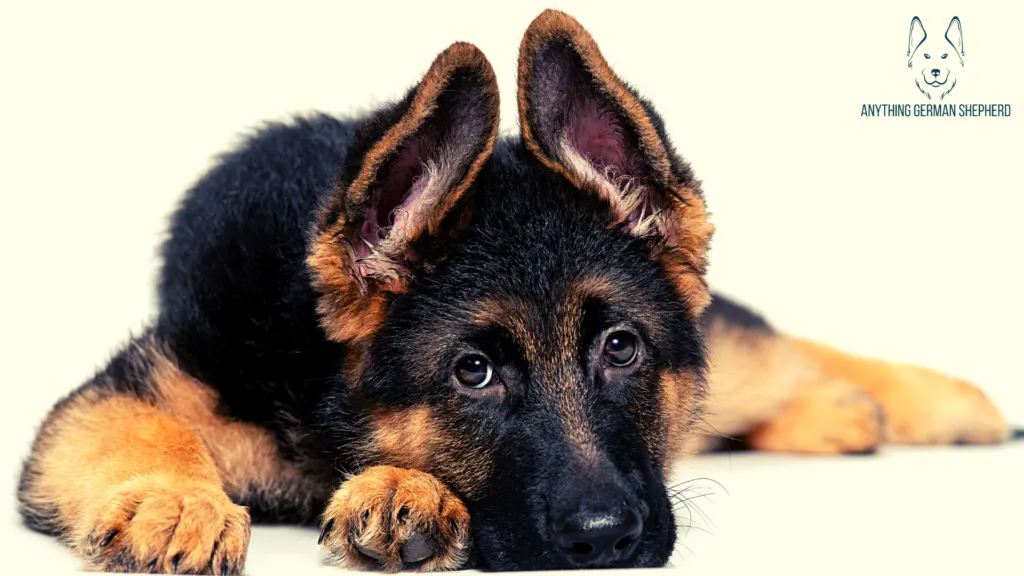
German Shepherd Puppy Ear Stages
German Shepherd puppy ears go through stages just like the rest of their growing bodies.
However, the timing of these stages can vary based on your GSD puppy’s genetics and body size, among other factors.
If you don’t see your German Shepherd puppy’s ears start to perk up by the age of five months, you may want to intervene.
Let’s now go over what to expect during the first year of a German Shepherd’s life.
First 5 months
When your German Shepherd puppy was a newborn, their ears were floppy.
All dogs are born with floppy ears, so this is totally normal.
But a German Shepherd puppy’s ears should start to perk up soon after.
In some cases, your puppy’s ears might start the process of standing up as early as four weeks old!
In other cases, it may take as long as four months before you see signs of the alert ears the GSD breed is known for.
When teething begins for GSD puppies at around the age of 3 months, it is possible for their ears to perk up and then go down again.
This will stop once teething is over, and the ears should perk back up again.
But for many German Shepherd puppies, their ears won’t stand up until several months later.
Although it may seem odd at first, the teething process actually has a big impact on ear development for GSDs.
Like teeth, ear cartilage also requires calcium to develop properly.
During these early stages in a GSD’s life, the calcium being consumed is being allocated to other parts of the puppy’s body.
So not enough calcium is being sent to develop the ear cartilage.
This is why it’s common to see GSD puppy ears going from erect to floppy, and back to being erect during this phase.
That’s also why there’s no real cause for concern at this point.
It’s totally normal for their developing bodies to have ears that aren’t standing up.
Months 5 to 6
At around 5 months of age, teething is usually complete and so this will no longer affect the development of their ears.
It is common for GSD ears to already be standing straight up and erect at this point.
But even if your pup’s ears aren’t standing perfectly erect just yet, there’s still no need to worry.
This is usually the age at which their ears will begin to strengthen and perk up, resembling the classic German Shepherd look.
The critical period to watch and wait for is the period between 5 and 7 months.
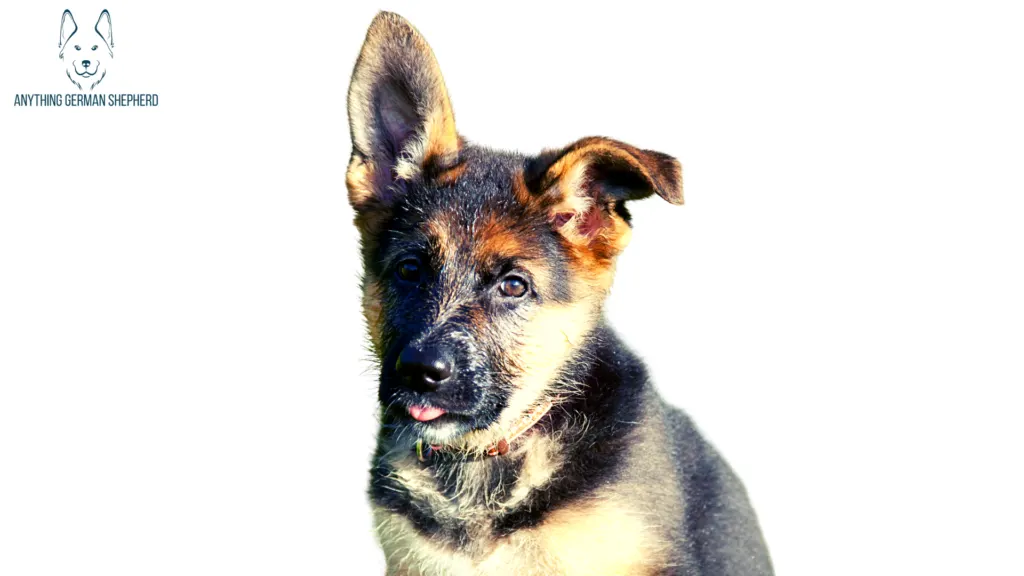
Months 6 to 8
A German Shepherd puppy’s ears should be erect by this age.
If your dog’s ears are still not standing at this point, then it’s time to take this issue a little more seriously.
Begin by talking with your veterinarian regarding steps you can take to help strengthen your dog’s ears.
You should ideally do this at the 6 month mark.
If your pup reaches 8 months of age and the ears still aren’t standing erectly, then they may never take on the classic GSD look.
At this point, the chances become increasingly smaller that their ears will ever perk up normally, so taking action early enough is the key here.
Months 8 to 12
Hopefully by this stage, your GSD’s ears are standing strong and sturdy – even if you have had to intervene in the development process.
There is no shame in using tape and popsicle sticks to prop your German Shepherd’s ears up!
So if they are tall and erect by now, then you can rest easy knowing that your dog’s ears will never flop back down again.
Ideally, they will take on the signature German Shepherd look.
But there are actually a variety of different shapes your GSD’s ears can end up with.
We’ll get into that later.
For now, just know that your dog’s ear cartilage is in its final development stage.
The ears will become even stronger overall during this time.
This includes the ear cartilage, and the surrounding muscles and fibers.
Reasons Why Your German Shepherd’s Ears Aren’t Standing Up
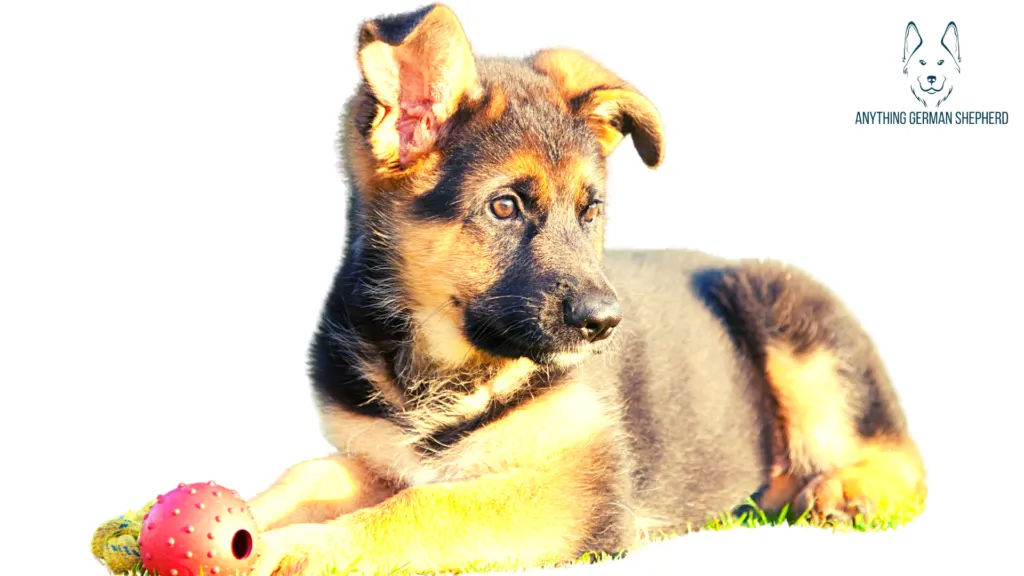
German Shepherds have strong cartilage structures that support their uniquely erect eras.
But if your dog’s ears aren’t standing up properly, it’s important to figure out why that is if you hope to correct the problem.
Although broken ear cartilage is one possible explanation, there are actually several potential causes of floppy ears in GSDs.
Injury
Injuries caused by rough play or excessive scratching can damage the ear cartilage or other surrounding tissues, resulting in floppy ears.
This is especially common in younger puppies whose ears haven’t fully developed and are more easily affected.
Teething
As mentioned earlier, the calcium puppies consume is needed for the teething process.
The issue is that the ear cartilage also needs this calcium to form properly and harden during this same time period.
So until the teething process is over, and more calcium can be directed to the ear cartilage, your pup may have floppy ears.
The ears might pop up early on, only to flop back down around the four months mark.
But this should not be a cause for concern until after your puppy has finished teething.
On top of the cartilage that needs to fully develop, there are also other muscles and ligaments surrounding the ears that need time to mature.
Ear Infections
Ear infections can also damage the ear tissues.
So if you notice any swelling, foul odors, discharge, or if your dog appears to be in pain, contact your veterinarian.
Parasites
Parasites like ear mites and ticks are the ones most commonly found in dog’s ears.
Although they won’t directly damage the ear tissues, they can lead to infections.
As your German Shepherd scratches at the infection, this can damage the ears.
In the same way, if your dog shakes its head aggressively in an attempt to get the parasites out, this can also cause trauma.
Poor Breeding
Poor genetics as a result of improper breeding practices is another common cause of floppy ears in GSDs.
These dogs will also be more likely to sustain ear injuries since the ear cartilage won’t be as strong.
Dogs with poor genetics are more vulnerable to disorders that affect the overall structure of the ears.
Diet
A German Shepherd puppy’s diet should support the animal’s growth spurt during the first year of life.
Dogs going through their puppyhood growth spurt need plenty of vitamins and minerals to support this growing stage, including:
- Collagen
- Magnesium
- Manganese
- Sulfur
- Hyaluronic acid
So if your dog’s kibbles are not providing sufficient amounts of these nutrients, try supplementing their diets.
Ear Cleaning
Although regular cleaning is important, be very cautious around a GSD puppy’s ears.
Especially during the first six months, be extra careful not to aggressively clean their ears.
They will be more prone to lesions in the ear cartilage at this time.
How To Help Your Dog’s Ears Stand Up
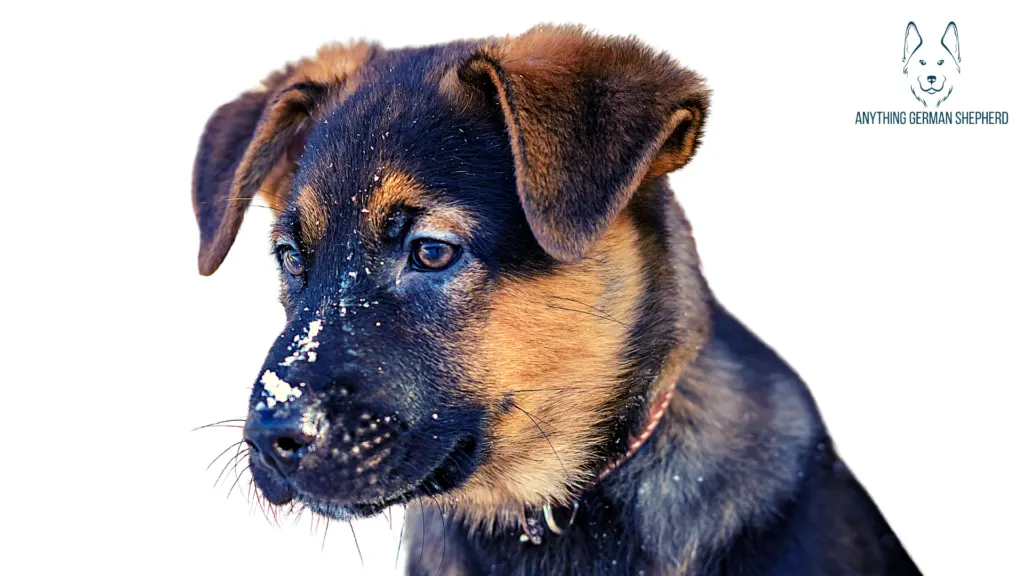
The good news is that there are steps you can take to help your German Shepherd’s ears stand up.
German Shepherd puppy ear taping and gluing are both methods that many breeders and GSD owners use to help guide their dog’s ears into the adult upright position.
Yet it would be understandable if you are reading this and feel dismay or even horror.
Tape or glue a puppy’s ears?
How can that possibly be a good thing?
But understand we are not talking about doing anything harmful or invasive.
The techniques you are about to read about will not harm or hurt your German Shepherd puppy at all.
They will simply support the ears to grow into the upright position without having to work so hard to get there – or stay there.
Taping
The goal with German Shepherd puppy ear posting, or taping, is to help guide your puppy’s ears into the correct upright adult position without being invasive or uncomfortable.
You want to give your pup enough time to try to do this naturally.
But you also want to intervene before the cartilage in the ears starts to harden (usually around seven to eight months old), leaving the ear flaps in the wrong position.
You will need the following supplies:
- Some type of surgical tape (NOT duct tape or any super-adhesive tape).
- Foam roller inserts or foam pipe insulation cut to size.
- Two plain popsicle sticks or unsharpened pencils.
Here is what you want to do (if you feel unsure, always ask your GSD puppy’s breeder or your canine veterinarian for assistance):
- Insert one popsicle stick into the center of each piece of foam.
- Insert the popsicle stick/foam into the ear.
- Wrap the surgical tape around the outside of the ear to hold the insert in place.
Be prepared for your puppy to find a way to paw off this strange contraption several times before they finally get used to it and forget about it.
You want to leave this in place for a week and then remove it to check the ear position.
You may notice the ears start to stand a little straighter week by week.
But if you see them flop over again, you need to re-tape them until they are strong enough to stand up on their own.
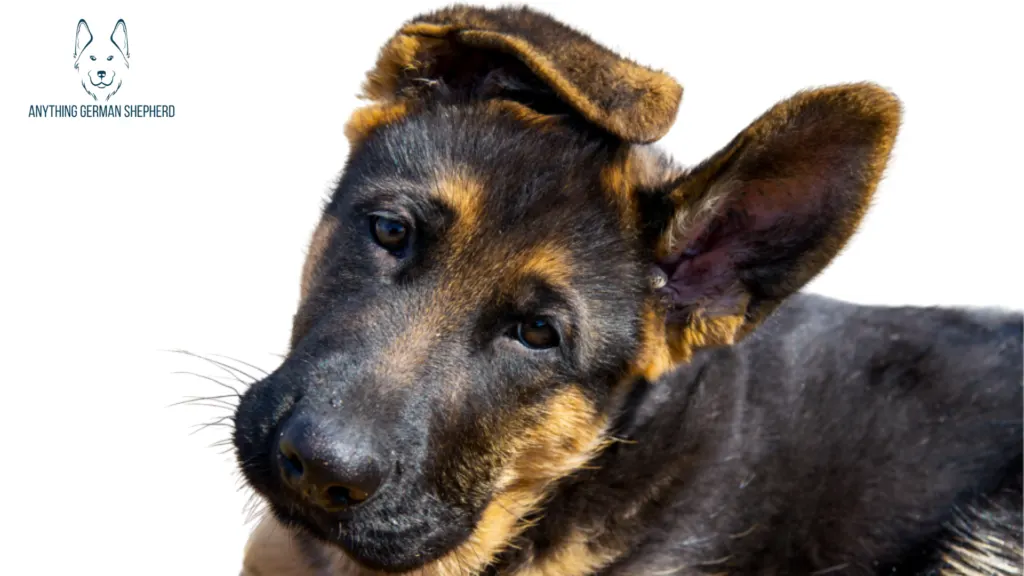
Ear gluing
Another option you can try is puppy ear gluing.
This is actually not nearly as awful as it sounds and is far easier to do than the ear taping method.
Another perk of puppy ear gluing over taping is that you are not going to cut off any air circulation to the inner ear canal.
To glue your puppy’s ears in the upright position, all you need is some type of skin bond or tear mending glue.
The key is to pick some kind of fabric glue (do NOT use super glue or super-bonding glue that may not come off).
What you need to do for this method is to add a dab of glue to the outside of the inner ear flap about two-thirds of the way down from the ear tip (point).
Then press the two ear flaps together for 30 seconds to allow the glue to set.
You definitely don’t need to use much glue!
Wherever possible, if you have multiple dogs in your household, try to keep your German Shepherd puppy from playing rough games with the other dogs.
Rowdy playtime can easily cause the ears to separate.
The glue will wear off on its own after a while and you can observe if the ears are able to remain upright and erect when this occurs.
If you need to, keep reapplying the glue until the ears are strong and stable to remain in the correct position without glue.
It may take a few weeks or longer for this to occur.
Do not worry if the ears are not in a perfect position.
As long as they stay upright, the inner muscles and tissues will naturally self-correct over time.
Quick Brace system
If you don’t feel confident using a do-it-yourself approach like ear taping or gluing, you may want to consider ordering a kit called the Quick Brace system.
This kit teaches you exactly what to do to help stabilize and support your GSD puppy’s growing ears.
Surgery
Certain situations may even require surgical implants, like when ear cartilage damage occurs.
But surgical ear implants won’t only help the ear heal.
When done properly, they will also train your dog’s ears to develop the classic erect – standing shape.
Massage the Ears
Massaging the ears helps by increasing blood flow to the ears, helping your form strong ear:
- Muscles
- Fibers
- Cartilage
Chew Toys
Chew toys are not only great for keeping your pup occupied, but they can also be great sources of collagen.
This will help build strong ear cartilage capable of holding the ears in the upright position.
Chew toys also work the ear muscles. This will strengthen the surrounding tissues.
Quality Diet
A quality natural diet is very important for your dog’s overall health.
This is especially true for dogs prone to health issues, like German Shepherds.
Foods rich in nutrients like calcium and glucosamine will help your dog form strong and healthy ears.
These nutrients are vital for developing sturdy ear cartilage.
Stimulation
Dogs communicate a lot with their ears.
Just think of German Shepherds that are alert and focused on something, like an odd noise they heard outside.
Chances are, their ears will be standing erectly.
Stimulation like this encourages the use of the ear muscles.
There are plenty of ways to stimulate your GSD’s ears muscles, including:
- games
- training
- talking to your pet
Ear Protection
Protecting the ears is more of a preventative measure to reduce the risk of injuries to the ear.
There are two areas where you will definitely want to pay closer attention.
Bath time and during playtime with other dogs.
Keeping water out of the ears will reduce infections and head shaking.
Using a headband is an easy way to do this, and can also prevent injuries when playing with other dogs.
What causes German Shepherds to have floppy ears?
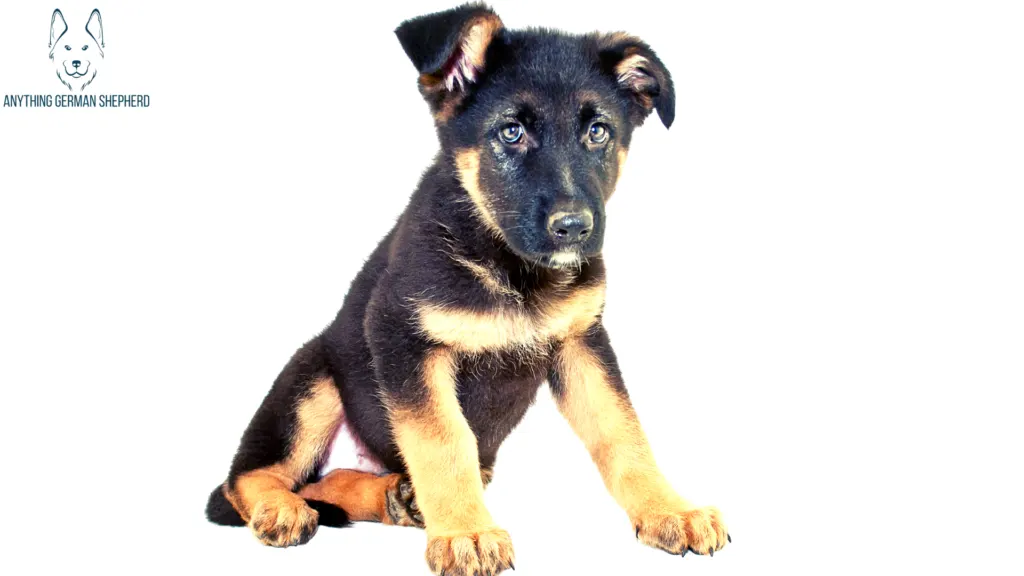
Your German Shepherd’s ears may be floppy for several reasons.
The most common ones include breeding issues, teething, cartilage development issues, trauma, and poor nutrition or hygiene.
Breeding
Pointy German Shepherd ears are among the top distinct features of the breed.
Unfortunately, this can sometimes lead to improper breeding practices.
In some cases, breeders focus too much on this feature and end up breeding German Shepherds with ears that are so big they can’t stand up, causing them to flop under their own weight.
Teething
Floppy ears are a common occurrence when the dog is teething.
The main reason for this is that, while teething, your German Shepherd’s calcium resources are being allocated elsewhere, to support the development of their adult teeth.
As soon as they are done teething, you can expect your German Shepherd’s ears to perk back up on their own.
Developing cartilage
German Shepherd puppies are born with floppy ears.
As their bodies develop, their ear cartilage and muscles also develop up to the point that they are able to support the weight of the ears, keeping them upright.
German Shepherd ears typically start to perk up when the dog is about 6 to 10 weeks old.
They can also sometimes flop back down while the dog is teething only to stand up again.
Generally, a German Shepherd’s ears should stand upright on their own by the time the dog is six months old.
Trauma
Trauma is a common reason for floppy ears in German Shepherds.
Physical trauma caused by an accident or injury to the ears can cause one or both of them to drop.
If you suspect trauma, visit your vet to address any wounds and prevent infection.
Neglecting ear cleaning
German Shepherds don’t typically need a strict ear hygiene routine because their pointy ears don’t pick up as much dirt and dust as floppy ears do.
However, their ears need to be kept clean in order to prevent infections that could cause their ears to drop.
If your German Shepherd’s ears suddenly flop, check their ears for wax buildup or signs of infection.
Poor nutrition
A diet that is not rich in essential vitamins and minerals won’t support a young dog’s development needs.
Dogs not getting enough calcium and vitamin D during puppyhood may have trouble keeping their ears up as their skeletal support structure is not developed properly.
German Shepherd Ear Standard
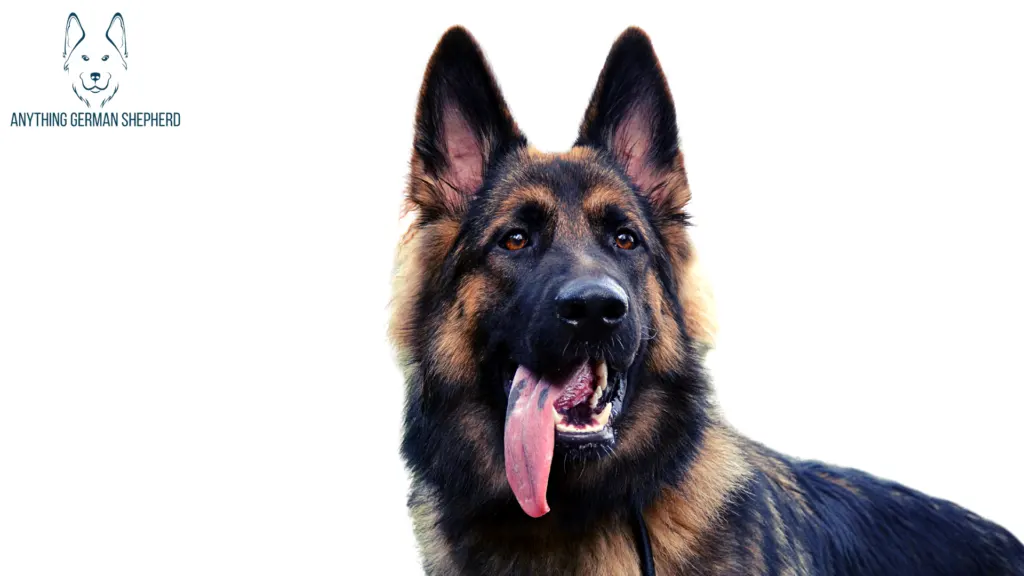
Standard German Shepherd ears are medium-sized and triangular.
They should be well-aligned, symmetrical (namely just as wide as they are tall), and carried upright.
They should open toward the front and be proportional to the size of the dog’s head.
The inner part of the dog’s ears should also align with their eyes.
However, not all dogs will have perfectly standard ears and some may have ears that are too large, too small, too high, too low, or just ears that point in the wrong direction.
In fact, there are at least 12 different German Shepherd ear shapes, each with their own distinct characteristics.
People Also Ask
At What Age Do German Shepherd Ears Stand Up?
German Shepherd ears will usually stand up at around 4 months of age.
But this can happen as early as the 1-month mark, or as late as the 6-month mark when teething finishes.
What Do German Shepherds’ Ear Positions Mean?
Ears positions can tell you a lot about a German Shepherd’s health and genetic background.
But more than anything, they tell you how the dog is feeling at any given time.
The ears really are the window to the soul for not just GSDs, but all dogs.
Just imagine the difference between a dog that’s excited for a walk, and a dog that’s being scolded for making a mess.
The excited dog will have ears perked up and alert, while the furry troublemaker’s ears will be weak and floppy.
Why Do German Shepherds’ Ears Go Up and Down?
A GSD’s ears can initially perk up and then go back down at around 3 months of age when teething begins.
During this time, more calcium is being directed to the growing teeth, and away from the ear cartilage.
Since ear cartilage needs calcium to grow strong enough to hold up German Shepherd ears, they can flop down when they’re not getting enough.
When teething is over, and more calcium can be directed back to the ears, they will most likely stand back up again.
When should I worry about my German Shepherd’s ears not sticking up?
You should worry if your German Shepherd’s ears are not sticking up at 6 months of age.
It is best to begin helping and training your dog’s ears to stand up in the erect position as soon as possible.
If you get to the 8 month mark and your GSD’s ears still are not sticking up, then they may never stand up correctly.
This is especially true if your pup has sustained an ear injury in the past, and broke the ear cartilage as a result.
German Shepherd puppies are especially prone to this during the first 6 to 8 months, since their ears are still developing.
These injuries can occur during rowdy play with other dogs and people, or from excessive scratching.
That’s why it’s best to begin doing things like ear taping and adding supplements to their diet earlier rather than later.
This will help their ears develop faster and stronger, and will help prevent ear injuries in the future.
But in most cases, if you act fast enough, even the floppiest German Shepherd ears are capable of being corrected.
How can you tell if a puppy’s ears will stand up?
Ear development can vary from puppy to puppy.
However, there are some early signs you can watch out for to know whether your German Shepherd’s ears will perk up or not.
If they stand up when the puppy is scared or excited or when they bark, you can expect to see fully erect years by the time they are six months old.
If they don’t perk up on their own by then, you may have to take action.
Will my German Shepherd mix ears stand up?
Depending on the genes they inherited, your German Shepherd mix may have erect ears or not.
You can support their ear development by giving them chew toys, massaging the base of their ears, and giving them calcium and vitamin D supplements.
German Shepherd Puppy Ear Structure and Anatomy
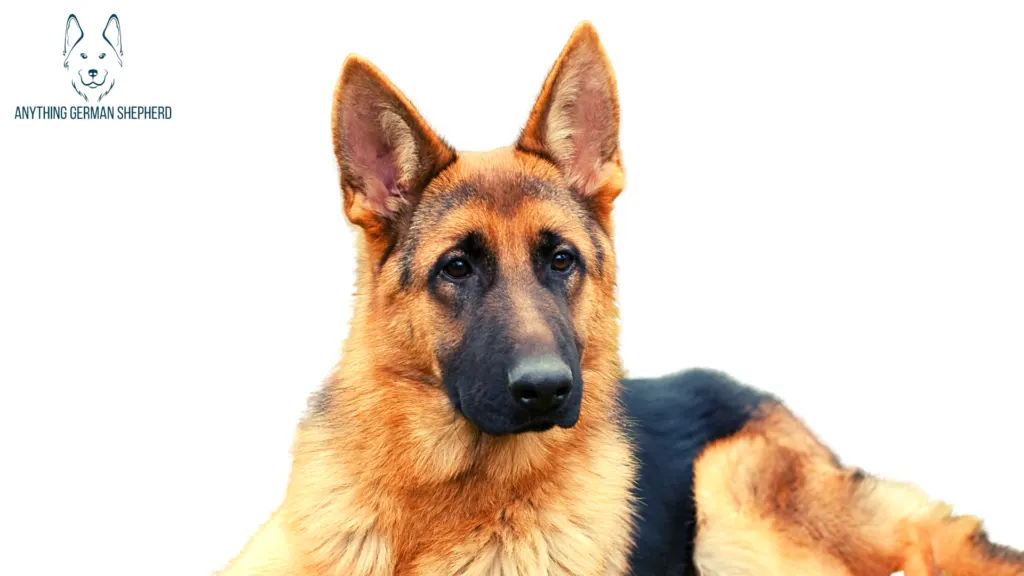
A dog’s ears are comprised of four basic sections: the flap, the outer ear, the middle ear, and the inner ear.
The ear flap is the outermost ear and is often called the pinna (plural is pinnae). A dog has two pinna – one for each ear.
Each pinna can work independently of the other, which is part of what gives dogs such keen hearing.
In addition to hearing, your dog’s ears also serve to help with balance.
It is a common myth that German Shepherd dogs need to have their ears “set” or “fixed” in order to make them stand up, as Central Coast German Shepherds breeder points out.
The reason a German Shepherd’s ears stand up erect is because of the rim of cartilage that gives structure and shape to each ear.
This is the same reason all German Shepherd puppies are born with their ears down and floppy.
The cartilage has not started to form and harden in the ears yet – that won’t happen until later on in life.
As long as your German Shepherd puppy is eating an appropriate large breed complete and balanced puppy diet and is basically healthy and sound in every other way, there is no need to worry if you don’t see the ears standing up at first.
It takes time for the cartilage to form, thicken and then harden into the characteristic erect ear position of the German Shepherd.
As Hausamberg Shepherds explains, your puppy’s body is taking in calcium through their food, which is what the ear cartilage needs to form properly and harden.
The only trouble is, lots of other parts of your puppy’s body need that calcium too.
This is why you may see your little pup’s ears stand up straight one minute and flop over the next minute.
The ears might pop up as early as four weeks old only to flop back down around four months old.
Not only is the cartilage in the outer ears still forming and hardening, but the many muscles, tendons, ligaments, and tissues that help the ears move and function are still getting coordinated as well.
This is why it is wise not to get concerned about ear position or stability until after your German Shepherd puppy has finished teething.
There is just too much growing going on to expect your little puppy to look like a full-grown adult dog yet.
But if your puppy is approaching six months old and you haven’t seen any signs of the ears standing up yet, this is the time to start intervening to help nature along.
Learn About German Shepherd Puppy Ears
In this YouTube video, you can learn from an experienced German Shepherd dog owner and trainer about when to expect your dog’s ears to stand up.
This video gives you some unique tips to help their ears get stronger and stand up without human assistance (like some of the tips you read about in this article).


















